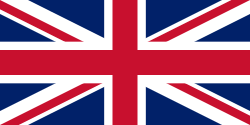| Colony of the Queen Charlotte Islands | |||||||||
|---|---|---|---|---|---|---|---|---|---|
| Colony of British North America | |||||||||
| 1853–1858 | |||||||||
Flag | |||||||||
| Anthem | |||||||||
| God Save the Queen | |||||||||
| Capital | None – governance via Colony of Vancouver Island | ||||||||
| Government | |||||||||
| • Type | Colonial Administration | ||||||||
| Monarch | |||||||||
• 1853–1858 | Victoria | ||||||||
| Lieutenant Governor | |||||||||
• 1853–1858 | James Douglas | ||||||||
| History | |||||||||
• Established | 1853 | ||||||||
• Disestablished | 1858 | ||||||||
| |||||||||
The Colony of the Queen Charlotte Islands was a British colony constituting the archipelago of the same name from 1853 to 1858, when it was amalgamated into the Colony of British Columbia. [1] In 2010, the archipelago was renamed Haida Gwaii. [2]
Contents
The Queen Charlotte Colony was created by the Colonial Office in response to the increase of American marine trading activity resulting from the gold rush on Moresby Island in 1851. No separate administration or capital for the colony was ever established, as its only officer or appointee was James Douglas, who was simultaneously Governor of Vancouver Island. He was granted a commission as Lieutenant-Governor of the Queen Charlotte Islands in September 1852. [3]
While the archipelago was ostensibly a British colony, historical evidence, such as a seasonal mission of exploration to survey the islands as late as 1859 [4] does not support the establishment of a permanent European settlement following the unsuccessful conclusion to the gold rush in 1853.[ citation needed ]
Prior to and during its establishment as a nominative British colony, the archipelago was inhabited by groups of the Haida people, which comprised the sole population of the ostensible colony. [5]
